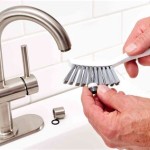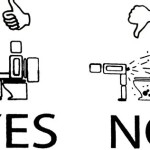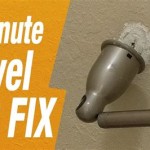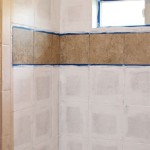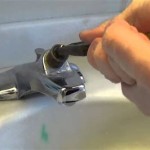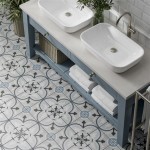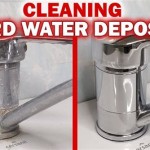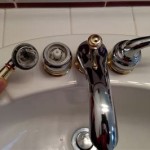How To Get Mold Off The Bathroom Ceiling
Mold growth on bathroom ceilings is a common household problem, particularly in areas with high humidity and poor ventilation. The warm, moist environment created by showers and baths provides ideal conditions for mold spores to thrive. Addressing this issue promptly is crucial for maintaining a healthy home environment and preventing potential structural damage. This article will provide a comprehensive guide on how to effectively remove mold from a bathroom ceiling, outlining the necessary preparations, cleaning procedures, and preventative measures.
Mold is a type of fungus that reproduces through tiny spores. These spores are ubiquitous and present in both indoor and outdoor environments. While mold itself is not always dangerous, certain types can produce allergens and irritants that can cause allergic reactions, respiratory problems, and other health issues. Prolonged exposure to mold can exacerbate existing health conditions, especially in individuals with sensitivities or compromised immune systems. Furthermore, unchecked mold growth can damage building materials, leading to costly repairs.
Before embarking on mold removal, it is essential to identify the type of mold present. While a laboratory analysis is the most accurate method, visual inspection can provide initial clues. Mold can appear in various colors, including black, green, brown, and white. Black mold, often referred to as *Stachybotrys chartarum*, is commonly associated with health concerns, although other types can also pose risks. Regardless of the mold type, proper safety precautions should always be taken during the cleaning process.
The severity of the mold infestation will also influence the cleaning approach. Minor mold growth, typically covering small areas, can often be addressed with basic cleaning methods. However, extensive mold infestations, covering large portions of the ceiling or penetrating deeper into the material, may require professional remediation. If the mold growth is severe, or if there are underlying issues such as leaks or persistent moisture, it is highly recommended to consult with a qualified mold remediation specialist.
Safety Precautions and Preparations
Prior to commencing any mold removal activities, it is imperative to prioritize personal safety. Mold spores can become airborne during the cleaning process, potentially leading to inhalation and skin contact. Therefore, the following safety precautions should be observed:
Personal Protective Equipment (PPE): Wear appropriate PPE to protect yourself from mold exposure. This includes:
*
Respirator or Mask:
A NIOSH-approved N-95 respirator or a higher-rated mask is essential to prevent inhaling mold spores. *Gloves:
Wear waterproof gloves, such as rubber or nitrile gloves, to protect your hands from direct contact with mold and cleaning solutions. *Eye Protection:
Goggles or safety glasses with side shields should be worn to prevent mold spores and cleaning solutions from entering your eyes. *Protective Clothing:
Wear long sleeves and pants to minimize skin exposure. Consider wearing disposable clothing that can be discarded after the cleaning process.Ventilation: Ensure adequate ventilation in the bathroom to minimize the concentration of airborne mold spores. Open windows and doors, and use a fan to circulate air. If possible, use an exhaust fan to draw air out of the room.
Isolation: If the mold infestation is significant, consider isolating the bathroom from the rest of the house to prevent the spread of mold spores. Seal off the doorway with plastic sheeting and painter's tape.
Removal of Obstacles: Remove any loose items from the bathroom, such as towels, toiletries, and decorations, to prevent them from becoming contaminated with mold spores. Cover or remove any furniture that cannot be easily moved.
Preparation of Cleaning Solution: Prepare the chosen cleaning solution according to the manufacturer's instructions. Several effective cleaning solutions can be used for mold removal, including:
*
Bleach Solution:
Mix one part bleach with ten parts water. This is a potent disinfectant, but it should be used with caution due to its harshness and potential for discoloration. *Vinegar:
White vinegar is a natural and effective mold killer. It can be used undiluted. *Hydrogen Peroxide:
A 3% solution of hydrogen peroxide is a mild disinfectant and can be used to kill mold. *Baking Soda:
Baking soda is a natural deodorizer and can help to absorb moisture. Mix it with water to create a paste. *Commercial Mold Removers:
A variety of commercial mold removers are available at hardware stores and home improvement centers. Choose a product that is specifically designed for mold removal and follow the manufacturer's instructions carefully.Gathering Supplies: Assemble all the necessary cleaning supplies, including:
* Spray Bottle (for liquid solutions) * Scrub Brush or Sponge * Clean Cloths or Rags * Bucket (for rinsing) * Ladder or Step Stool (for reaching the ceiling)
Mold Removal Procedure
Once the safety precautions and preparations have been completed, the mold removal process can begin. The following steps outline the recommended procedure:
Application of Cleaning Solution: Carefully apply the chosen cleaning solution to the affected area of the bathroom ceiling. If using a spray bottle, point the nozzle directly at the mold and avoid spraying excessively. Allow the solution to sit on the mold for the recommended time, typically 10-15 minutes, to allow it to penetrate and kill the mold. For thicker solutions like baking soda paste, apply a generous layer to the mold.
Scrubbing: Using a scrub brush or sponge, gently scrub the mold-affected area to remove the mold. Apply moderate pressure and avoid scrubbing too vigorously, as this can damage the ceiling surface. Focus on removing the mold stains and debris. For stubborn mold, reapply the cleaning solution and allow it to sit for a longer period before scrubbing.
Rinsing: Once the mold has been removed, rinse the cleaned area thoroughly with clean water. Use a clean cloth or sponge to wipe away any remaining cleaning solution and mold residue. Avoid using excessive amounts of water, as this can contribute to moisture buildup and promote future mold growth.
Drying: Thoroughly dry the cleaned area to prevent the recurrence of mold. Use a clean, dry cloth to wipe away any excess moisture. Consider using a fan or dehumidifier to accelerate the drying process. Ensure that the ceiling is completely dry before painting or applying any other finishes.
Disposal of Contaminated Materials: Dispose of any contaminated materials, such as cleaning cloths, sponges, and disposable clothing, in a sealed plastic bag to prevent the spread of mold spores. Follow local regulations for the disposal of hazardous waste.
Inspection: After completing the cleaning process, carefully inspect the ceiling to ensure that all mold has been removed. If any mold remains, repeat the cleaning process or consider using a stronger cleaning solution. Pay close attention to areas that are difficult to reach or where moisture tends to accumulate.
Preventative Measures
Preventing mold growth is crucial for maintaining a mold-free bathroom environment. Implementing the following preventative measures can significantly reduce the risk of mold recurrence:
Improve Ventilation: Ensure adequate ventilation in the bathroom to reduce humidity levels. Use the exhaust fan during and after showers and baths. Open windows and doors to circulate air whenever possible.
Reduce Humidity: Minimize humidity by promptly addressing any water leaks, condensation, or excessive moisture. Repair leaking faucets, showerheads, and toilets. Wipe down wet surfaces after showering or bathing. Consider using a dehumidifier to control humidity levels, especially in humid climates.
Regular Cleaning: Clean the bathroom regularly to remove soap scum, dirt, and other organic matter that can serve as a food source for mold. Pay particular attention to areas prone to moisture buildup, such as the shower, tub, and sink.
Proper Sealing: Ensure that all grout, caulking, and sealant around the shower, tub, and sink are in good condition. Repair or replace any cracked or damaged sealant to prevent water from penetrating behind tiles or into the walls.
Mold-Resistant Paint: Consider using mold-resistant paint on the bathroom ceiling. These paints contain additives that inhibit mold growth. Prepare the surface properly before painting by cleaning and priming it.
Monitor for Moisture: Regularly inspect the bathroom for signs of moisture damage, such as water stains, peeling paint, or musty odors. Address any issues promptly to prevent mold growth.
By following these instructions and implementing these preventative measures, individuals can effectively remove mold from their bathroom ceilings and maintain a healthier home environment. In instances of severe or persistent mold issues, professional remediation services should be sought to ensure complete and effective mold removal.

Bathroom Ceiling Mold Removal When To Clean Call Branch Environmental

How To Remove Black Mold From A Bathroom Ceiling

Mold On Bathroom Ceiling How To Clean Off

Cleaning Mold From Bathroom Ceilings Like A Pro Lovetoknow

Mold On Bathroom Ceiling How To Clean Off

How To Get Rid Of Mold On Your Bathroom Ceiling Aqa

Mold On Bathroom Ceiling How To Remove From

How To Get Rid Of Mould From Your Ensuite Ceiling Independent Ie

What Is The Best Way To Remove Mold From Bathroom Ceiling

Black Spots On The Bathroom Ceiling Flood Water Damage Honolulu Oahu Hawaii Md Restoration
Related Posts
